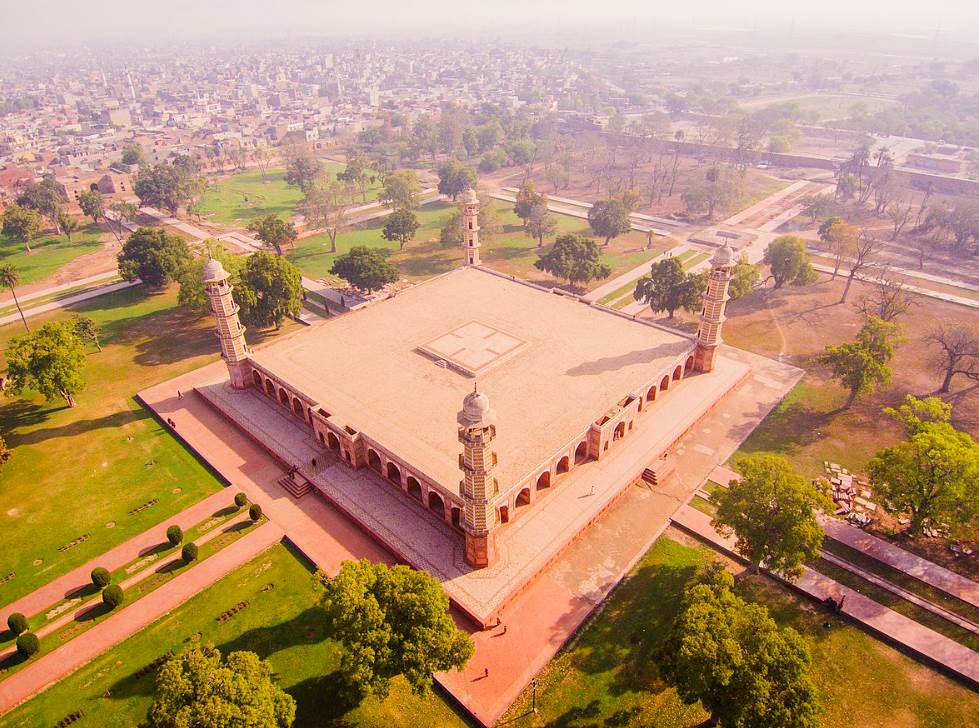Did you know that the word “Mausoleum” was derived from a structure now referred to as the “Mausoleum at Halicarnassus?”
This ancient structure was built between 353 and 350 BC in modern-day Bodrum, Turkey. It served as the tomb of Mausolus, the ruler of Caria at the time, and his wife (who was also his sister by the way) Artemisia II of Caria.
This amazing structure was so fascinating that it wasn’t just one of the 7 Wonders of the Ancient World, but it’s the reason we call an above-ground tomb “Mausoleum.” Unfortunately, it was destroyed by several earthquakes between the 12th and 15th centuries.
There are, however, countless other similar structures built in every corner of the planet, and in this post, you’ll discover the most famous mausoleums all around the world!
1. Taj Mahal
The Taj Mahal is arguably the most famous mausoleum in the world, mainly because of the distinctive architectural style it was built in. It’s situated on the southern bank of the Yamuna River in the city of Agra in the state of Uttar Pradesh in India.
It was commissioned by the Mughal emperor Shah Jahan in the year 1632 as a mausoleum for his favorite wife, Mumtaz Mahal. The monument was completed in the year 1647 and it was chosen as one of the New Wonders of the World in 2007.

2. Les Invalides
Les Invalides features the highest and most amazing dome in the city of Paris. That’s not just an interesting architectural feature of the structure, but also the spot that marks the location where the tomb of Napoleon Bonaparte is located at.
Napoleon’s body was exhumed in Saint Helena and brought here in 1840 on the orders of King Louis Philippe. This event is referred to as “le Retour des Cendres” or “the return of the ashes.” He’s not the only one buried here as he’s joined by many of his family members and multiple high-ranking members of the French military.
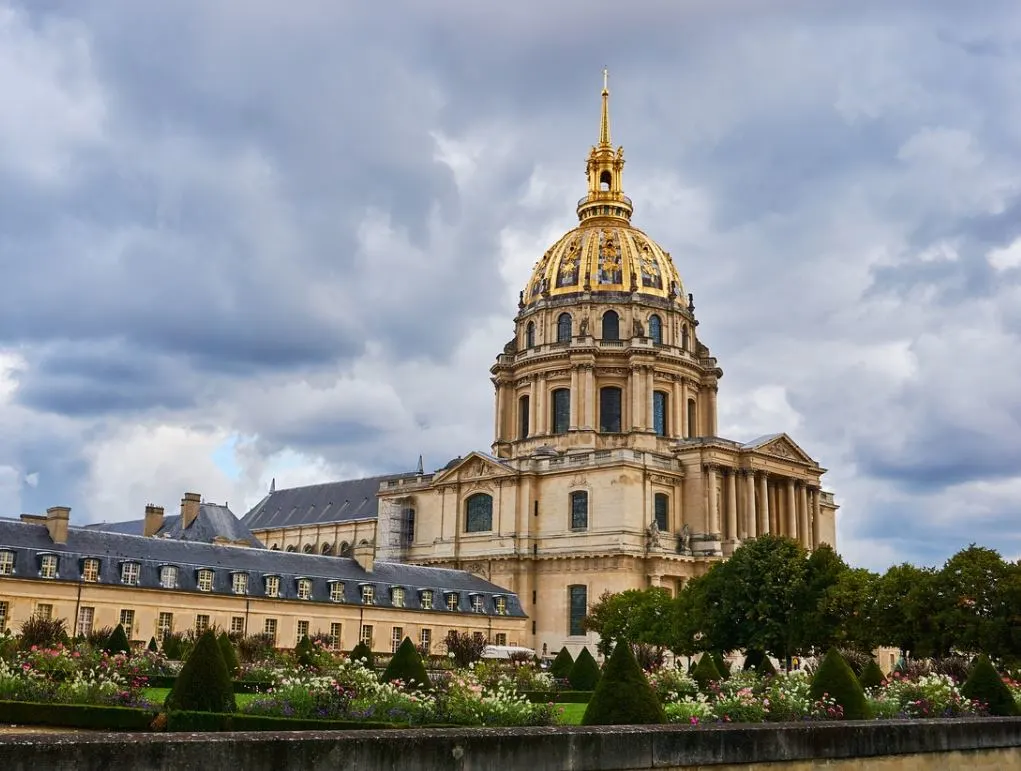
3. Castel Sant’Angelo
The Castel Sant’Angelo was originally referred to as the “Mausoleum of Hadrian” and is a wonderful landmark in Rome. It’s situated in the “Parco” Adriano,” a public park in central Rome on the northern bank of the Tiber River.
It was originally built to house the remains of Roman Emperor Hadrian who was Emperor from 117 to 137 A.D. He was, however, followed by multiple other Roman Emperors, up until Caracalla in 217. Afterward, the building’s purpose was changed and it was turned into a famous castle, a papal residence, and even a prison as well.

4. Pantheon in Rome
The Pantheon in Rome is another ancient Roman structure that survived through the centuries as the building was completed (after being rebuilt a couple of times) in the year 126, also during the reign of Emperor Hadrian.
It originally served its purpose as a Roman temple but was transformed into a Roman Catholic Church during the Middle Ages, which is the main reason why it still stands today. It started to become a mausoleum during the Renaissance with the burials of multiple famous artists, including Raphael Umbrias and Annibale Carracci.
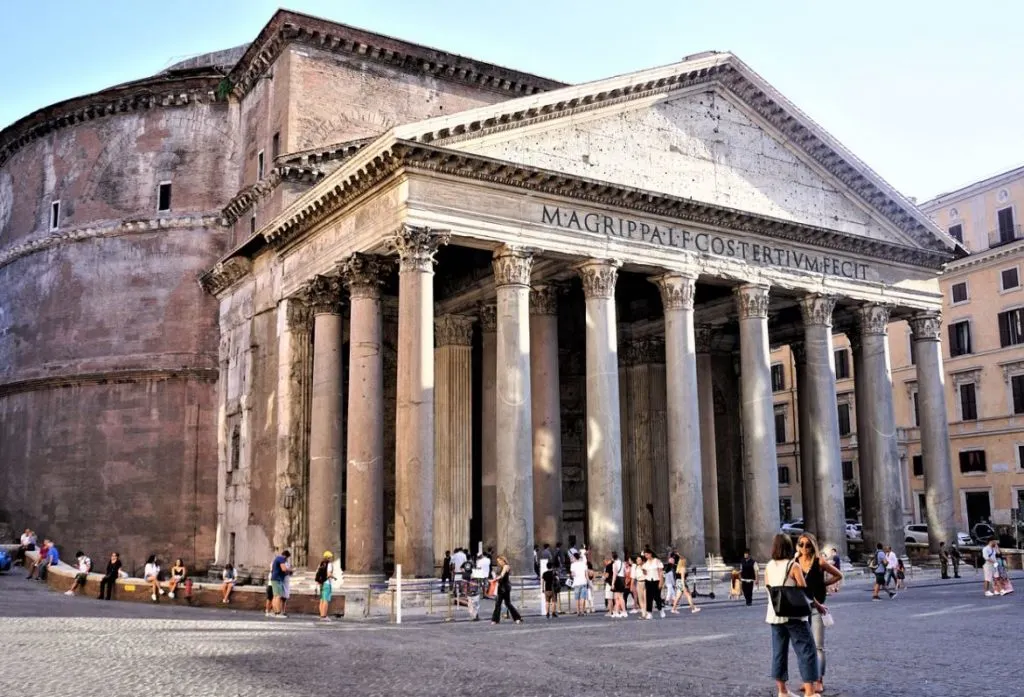
5. Panthéon in Paris
The Panthéon in Paris is an enormous mausoleum located in the 5th arrondissement of the city. It was constructed in the 18th century between 1758 and 1790 to use the building as a church dedicated to the patron saint of Paris, Saint Genevieve.
The building was completed the year that the French Revolution was reaching its boiling point and its purpose was turned into a mausoleum for French heroes shortly after. The chaotic history of France during the 19th century saw its purpose change a couple more times, but today, it’s one of the most important mausoleums in France reserved for important French citizens.
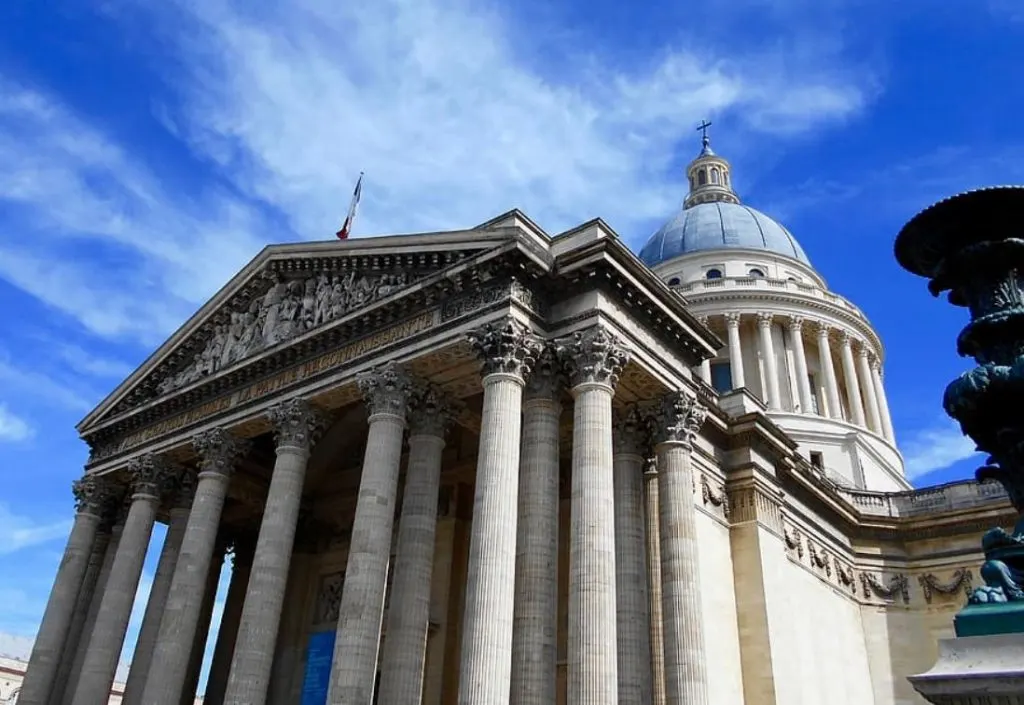
6. Kumsusan Palace of the Sun
The Kumsusan Palace of the Sun is one of the most remarkable landmarks in Pyongyang, the capital of North Korea. The building is also sometimes referred to as the “Kim Il-sung Mausoleum,” a name it received following the death of Kim Il-sung, the first leader of the country.
The building was originally built as the official residence of the great leader and was completed in 1976. It was his son and successor Kim Jong-Il who transformed the building into his father’s mausoleum following his death in 1994. He eventually ended up being buried there himself as well following his death in 2011.

7. Mausoleum of the First Qin Emperor
The Mausoleum of the First Qin Emperor is one of the most famous mausoleums in the world for an incredible reason. The tomb was built between 246 to 208 B.C. and is one of the most extensive archaeological sites in the world today with a total circumference of 3.9 miles (6.3 kilometers).
The most famous section of this immense necropolis is located on the east side of the tomb and consists of thousands of terracotta statues referred to as the “Terracotta Army,” an incredible sight to behold. Remarkably, the tomb of the emperor itself hasn’t been excavated yet!
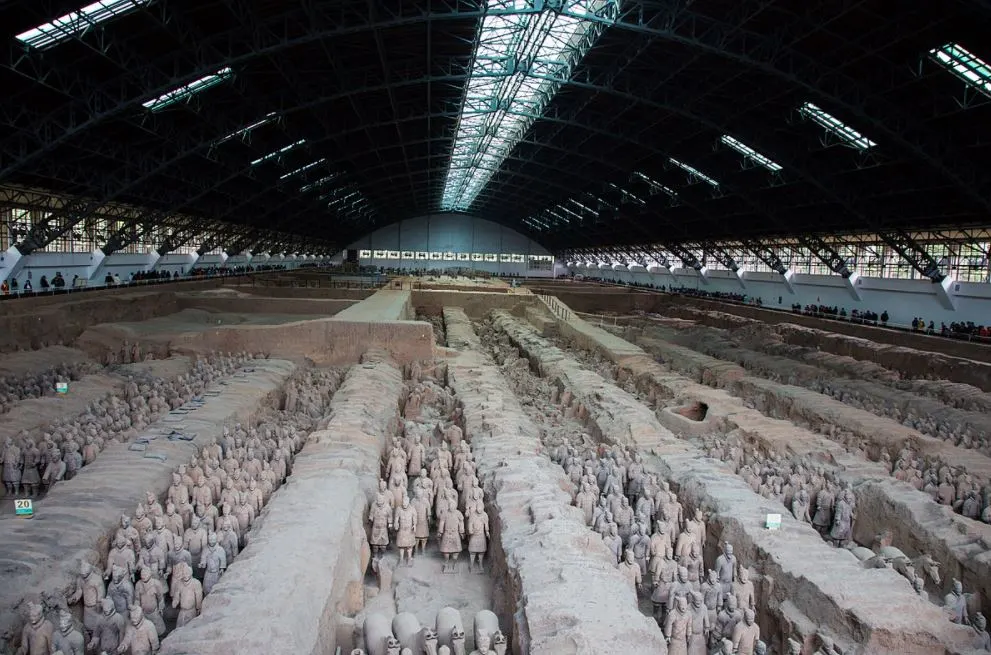
8. Mausoleum of Augustus
The Mausoleum of Augustus is the tomb that the first Roman Emperor Augustus built for himself. The structure is located on the “Piazza Augusto Imperatore” on the Campus Martius in Rome and was one of his first construction projects and was completed in the year 28 B.C.
With a diameter of 90 meters (295 feet) and (original) height of 42 meters (137 feet), the structure is also much bigger than it initially appears to be. A restoration project was started in 2017 and the building was finally reopened to the public in March 2021, guaranteed to turn it into one of the most popular tourist attractions in Rome.
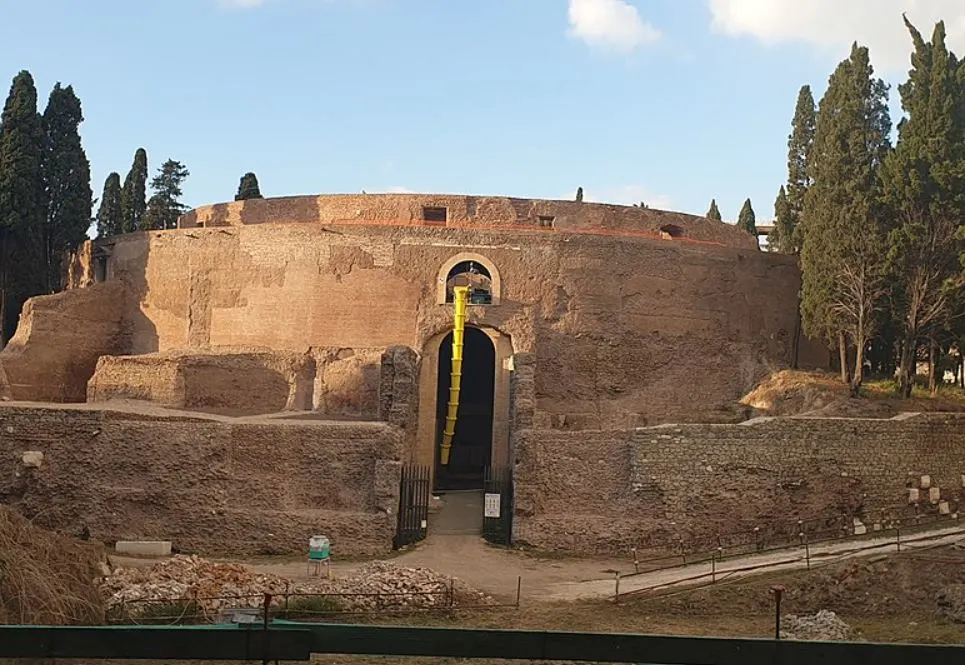
9. Lenin’s Mausoleum
Lenin’s Mausoleum is one of the most fascinating buildings on Red Square, the most famous and important square in Moscow. This incredible landmark in Russia’s capital holds the remains of the founding father of the Soviet Union, Vladimir Lenin.
Lenin died in 1924 and his preserved body has been on public display in a glass coffin ever since. The building resembles a step pyramid and is situated right in front of the Eastern part of the Kremlin wall, right on one of the best-known squares in the world.
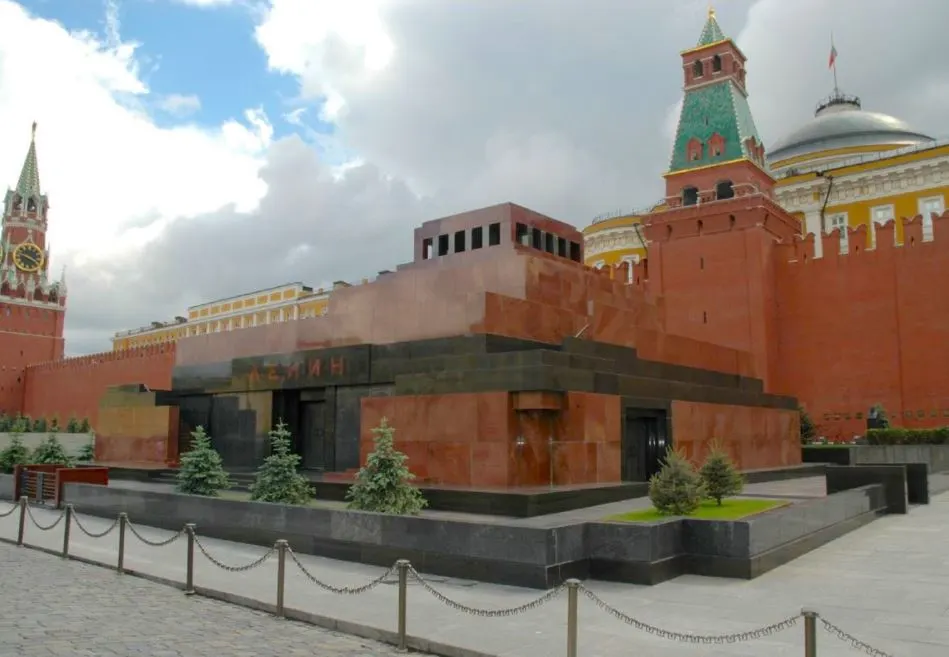
10. The Great Pyramid of Giza
The Great Pyramid of Giza is without question one of the most distinctive landmarks in Egypt. There are plenty of similar structures in the country, but this is the biggest one ever built and also one of the oldest ones, dating back to the 26th century B.C.!
The structure was built to serve as the tomb of Pharaoh Khafre, one of the most famous kings of the 4th Dynasty of ancient Egypt. His son and grandson also built a pyramid here on the Giza Plateau, now referred to as the Pyramid of Khafre and the Pyramid of Menkaure, both smaller than the original (but still pretty big).
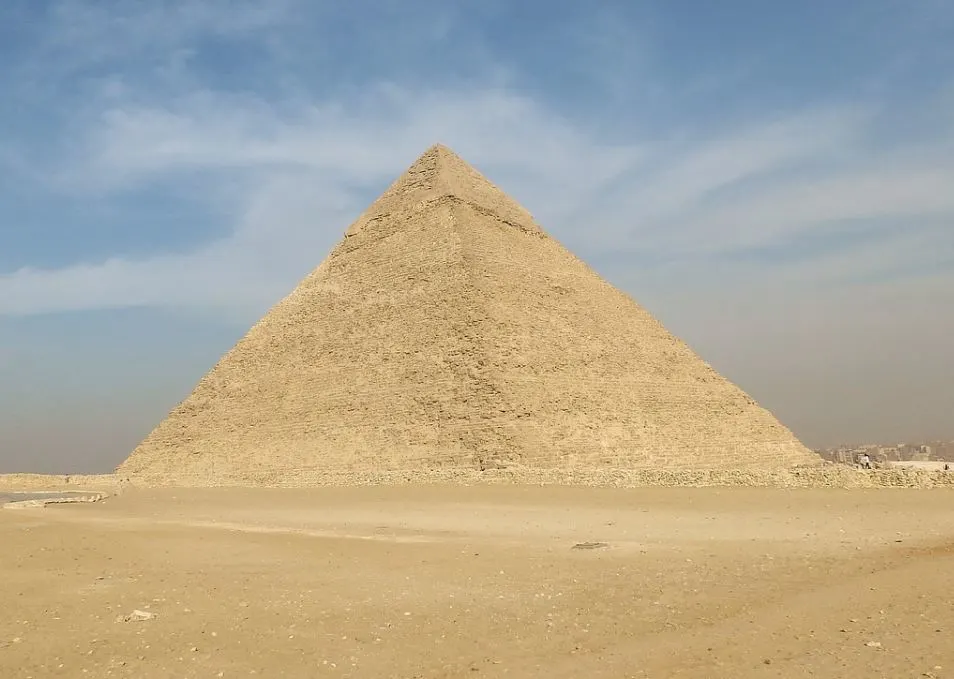
11. Petra
Petra in Jordan isn’t just one of the New 7 Wonders of the World and a popular location to shoot films (you saw the third episode of Indiana Jones, right?), many of the buildings are considered to be used as mausoleums.
The most iconic of all the rock-carved buildings in the archaeological city of Petra is the famous Al-Khazneh structure (yes, this is the one featured in Indiana Jones and the Last Crusade). It’s believed that this structure served as the mausoleum of Nabataean king Aretas IV, a man who reigned between 9 B.C. and 40 A.D.
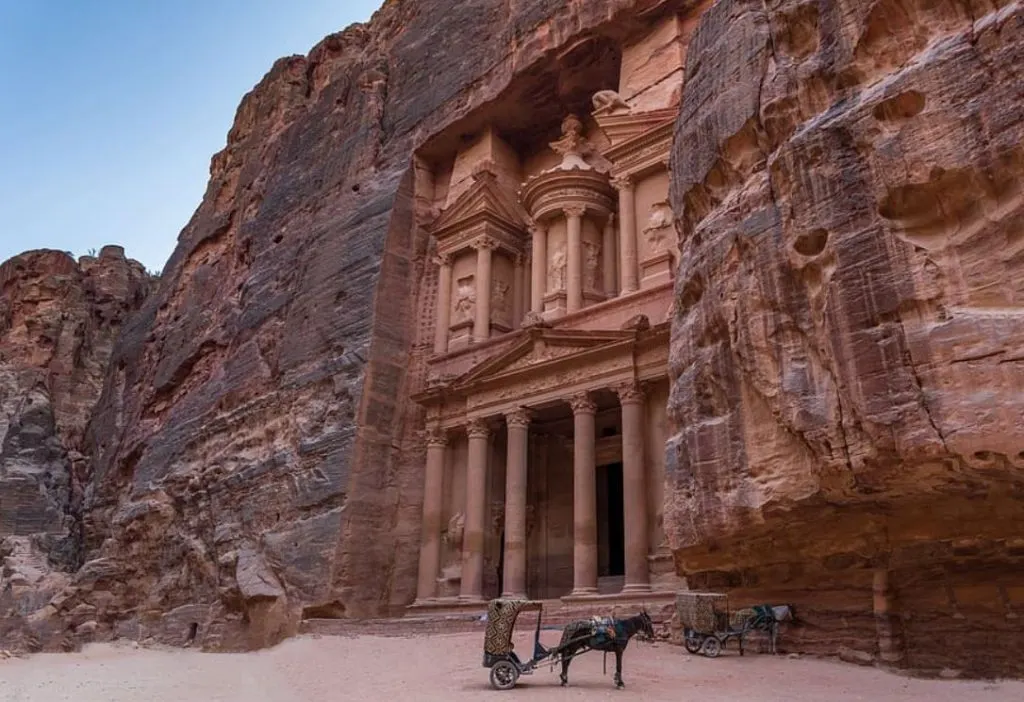
12. Royal Mausoleum at Frogmore
The Royal Mausoleum is surrounded by the Royal Burial Grounds and is situated within the Frogmore Gardens. These private gardens are part of the Home Park, a large park that adjoins Windsor Castle in the English county of Berkshire.
Apart from the Royal Mausoleum, which houses the remains of Queen Victoria (1819-1901) and her husband Prince Albert (1819-1861), the garden also features the Duchess of Kent’s Mausoleum. This separate structure houses the remains of Queen Victoria’s mother, Princess Victoria of Saxe-Coburg-Saalfeld (1786-1861). The Royal Burial ground is the final resting place of many members of the Royal Family.

13. Mausoleum of Mao Zedong
The Mausoleum of Mao Zedong is the final resting place of the man who is considered to be the founding father of the people’s Republic of China, Mao Zedong (1893-1976). Just like multiple other Communist leaders, his embalmed remains are on public display at the central hall of this structure in central Beijing.
The building was built in the exact location where the old ceremonial entrance gate on the southern end of the Imperial City used to stand which was called Ming Gate, Qing Gate, and China gate. This gate stood right in the middle of Tiananmen Square but was demolished in 1954 so this amazing square could be extended. The mausoleum was built shortly after Mao Zedong’s death in 1976 and has become one of the most popular tourist attractions in Beijing, the capital city of China, today.
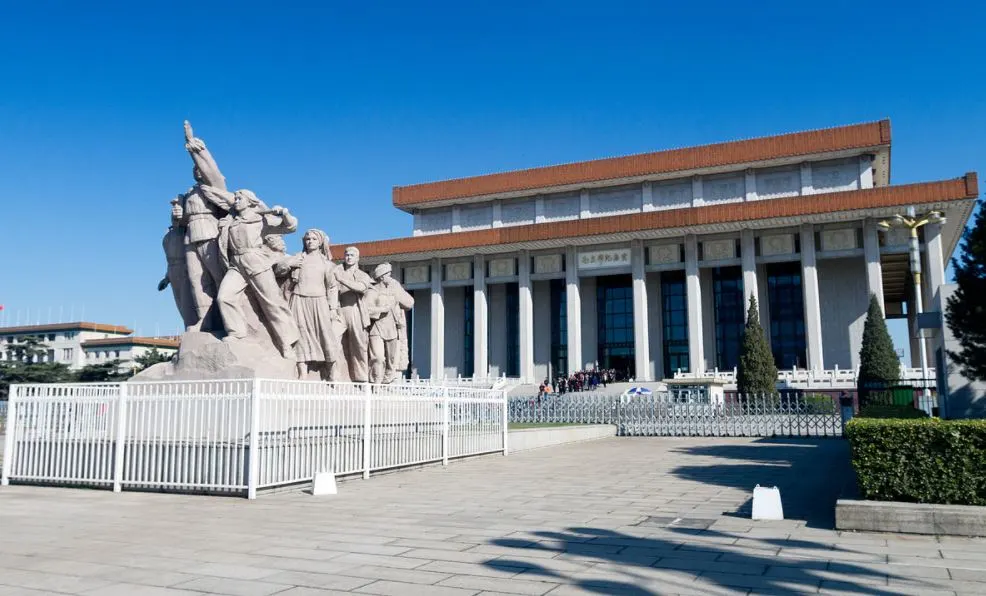
14. Treasury of Atreus
The Treasury of Atreus is also known as the “Tomb of Agamemnon” even though it most probably doesn’t have a relationship with any of these great rulers in ancient Greece. This remarkable domed structure is located at Panagitsa Hill in an archaeological site known as “Mycenae” in the northeastern part of the Peloponnesus in modern-day Greece.
This incredibly old structure was built during the Bronze Age around 1250 B.C. and most probably served as the tomb of the kings ruling over Mycenaean Greece. The mausoleum has been remarkably well-preserved considering its age and features the heaviest lintel in the world, a stone that weighs a whopping 120 tonnes. The structure itself was excavated into the slope of a hill and its dome was the largest of its kind in the world for well over 1,000 years.
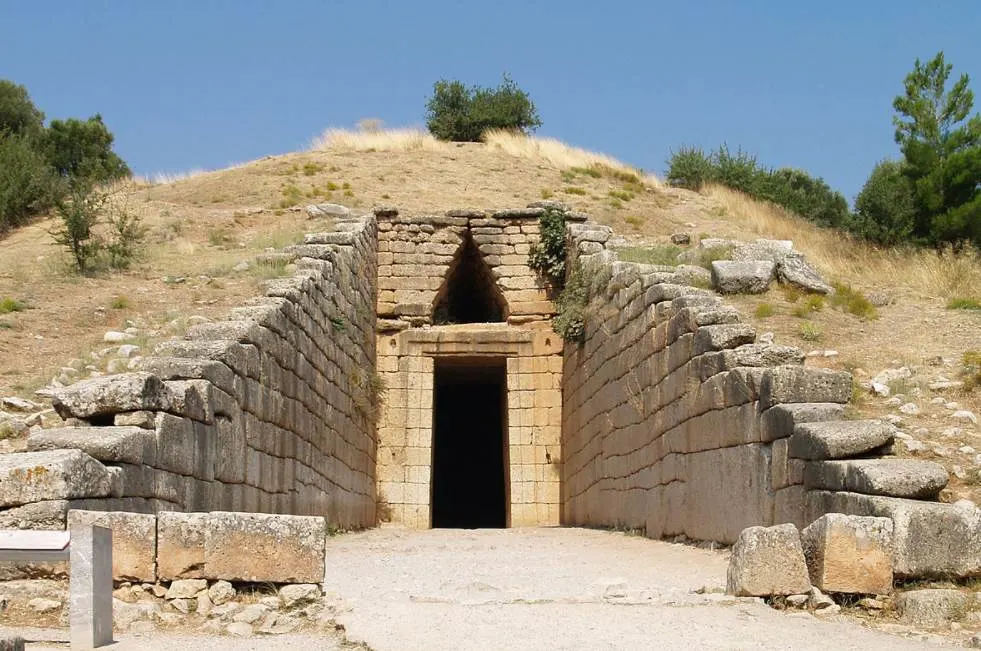
15. Tomb of Cyrus
The Tomb of Cyrus is one of the most important monuments in Iran, mainly because it’s considered to be the tomb of Cyrus the Great (600-530 B.C.), the founder of the first Persian Empire known as the “Achaemenid Empire” in the 6th century B.C. The tomb is located at the southern end of a large archaeological site called Pasargadae which features the remains of the ancient city of the same name. This city served as the capital of Cyrus’ empire.
Even though the structure is relatively small, it has been standing in this location for about 2,500 years and hasn’t suffered any major damage. That’s mainly because it was designed in such a way to make it earthquake-proof. It’s therefore considered the first base-isolated structure that was built in the world. Numerous Iranians gather around this monument during the Iranian New Year at the end of March, something that emphasizes the importance of the structure in the local culture.
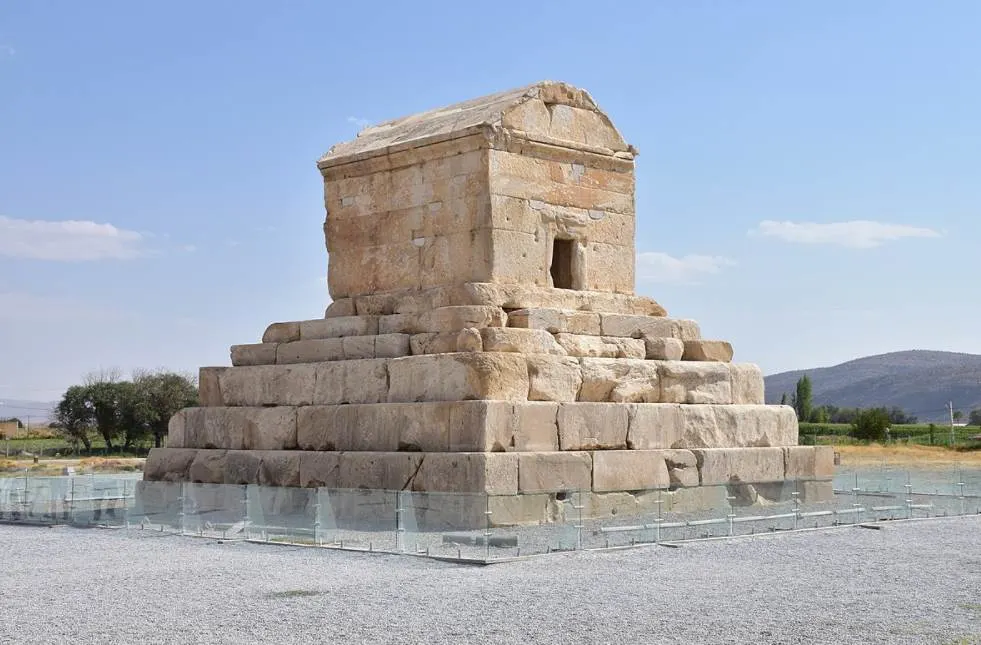
16. Hamilton Mausoleum
Hamilton Mausoleum is located in the large town of Hamilton, the administrative seat of South Lanarkshire in southern Scotland. It’s located in a large park that once served as the garden of Hamilton Palace, an enormous structure that served as the seat of the Hamilton family and Dukes of Hamilton since at least the 13th century.
Although the palace was demolished in the 1920s, the mausoleum was kept in place. That’s mainly because it was located 200 meters (656 feet) away from the opulent palace. The domed structure was built in the 19th century and is a remarkable sight in the enjoyable Strathclyde Country Park just outside of the town’s center. It once served as the final resting place of 18 family members of the Dukes of Hamilton but they have been transferred since Hamilton Palace was demolished.
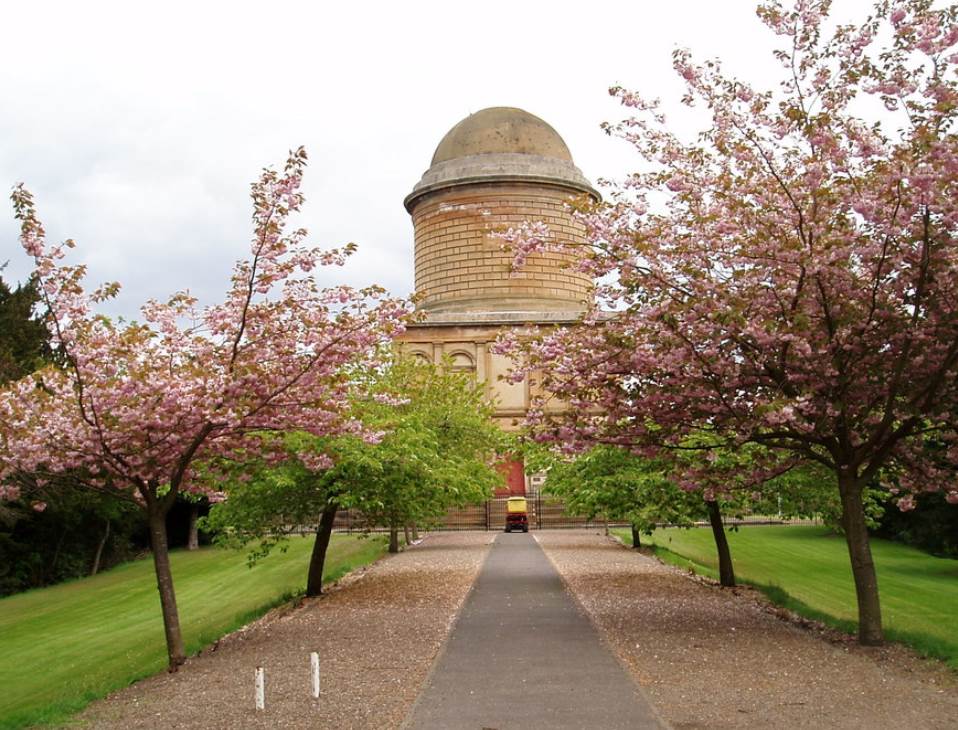
17. Grant’s Tomb
Grant’s Tomb is the name of a mausoleum in New York City that was constructed in honor of Ulysses S. Grant (1822-1885), the 18th president of the United States. It was Grant’s wish to be buried in New York together with his wife Julia. The remains of the couple are located inside this remarkable memorial in the city.
The Neoclassical building is located in the Morningside Heights neighborhood of Upper Manhattan and was completed in 1897. It features a square building that resembles the Mausoleum at Halicarnassus and a rotunda on top. The remains of the former president and his wife were placed in two sarcophagi that were inspired by the sarcophagus of Napoleon at Les Invalides in Paris.
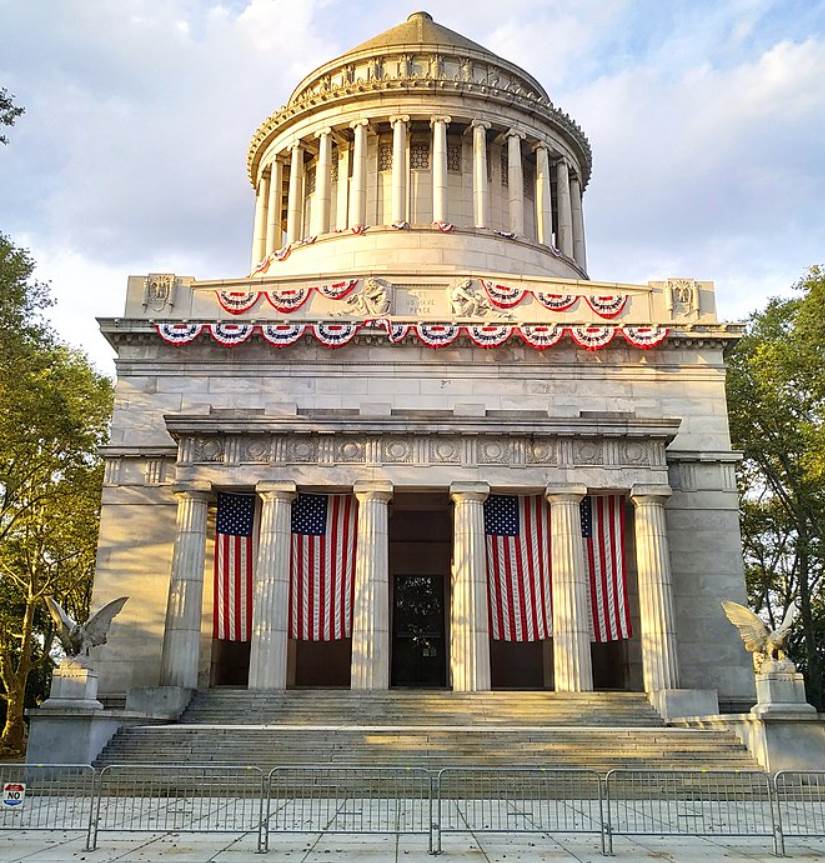
18. Tomb of Jahangir
The Tomb of Jahangir is the final resting place of the Fourth Mughal Emperor Jahangir (1569-1627). He reigned between 1606 and 1627 and the building was commissioned by his son. It took 10 years to build this huge mausoleum as it was completed between 1627 and 1637.
The building is coated in the northwestern part of Lahore, the second-largest city n Pakistan and the capital city Punjab. It features a square design and is dominated by 4 large minarets on each corner. The building is heavily decorated with Islamic ornamentations on the exterior and interior. The emperor is buried in an octagonal chamber in the center of this structure.
